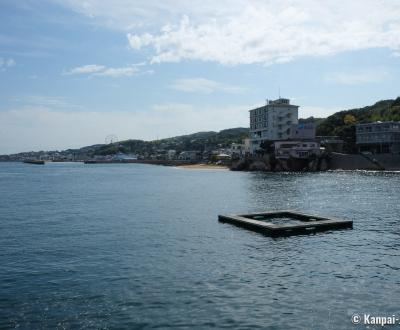Awaji
Seto’s Large Island Between Honshu and Shikoku
Awaji-shima is an island of the Seto Inland Sea, located between Akashi and Naruto Straits, in Hyogo prefecture in the south of Kansai area. Both a land of legends for the Japanese civilization and a leisure destination, Awaji offers many places to visits and a lots of activities for vacations with friends or family.
Awaji-shima is the largest island of the Seto Inland Sea, spreading nearly on a 600 km² superficies and with a population of a little bit more than 150.000 inhabitants. Located at the easternmost part of the sea, it delineates the bays of Osaka and Wakayama. This central location allows the island to bridge two of Japan’s large islands:
- Honshu in the north, by Hyogo prefecture (to which it is part of) and Osaka prefecture, and,
- Shikoku in the south, by Tokushima prefecture.
Three cities share the island’s territory:
- Awaji (淡路市) in the north;
- Sumoto (洲本市) the most important in the center ; and,
- Minami Awaji (南あわじ市) in the south.
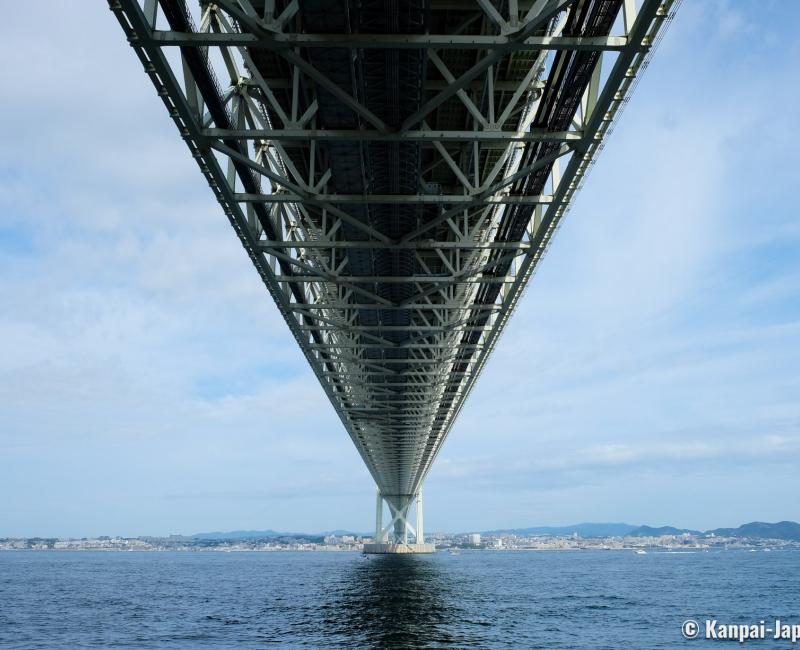
Island connected by two large suspended bridges
Awaji has an important particularity: there is no train 🚅 network on the island. However, it is easily accessible by the road as it is connected by two large bridges that cross the straits in the north and in the south:
- Akashi Kaikyo-Ohashi (明石海峡大橋): the longest suspended bridge in the world, that connects Awaji to Kobe by almost four-kilometer road;
- Onaruto-kyo (大鳴門橋): this large bridge connecting Minami Awaji to Naruto spans the famous Naruto whirlpools and is also used as an observation platform.
The most convenient transportation methods are therefore the car 🚙 and the bicycle. Many rest areas have been arranged along the freeway crossing the island. They are usually well-stocked, with all amenities, and we recommend stopping by to eat or to buy a few local souvenirs. For example, you can swing by Michi-no-Eki Awaji (道の駅 あわじ) for its spectacular view under Akashi Strait Bridge.
Cyclists can ride along the coast and enjoy the seaside panorama. It is also possible to travel by bus (combining "highways" buses and local lines) but it is less convenient.
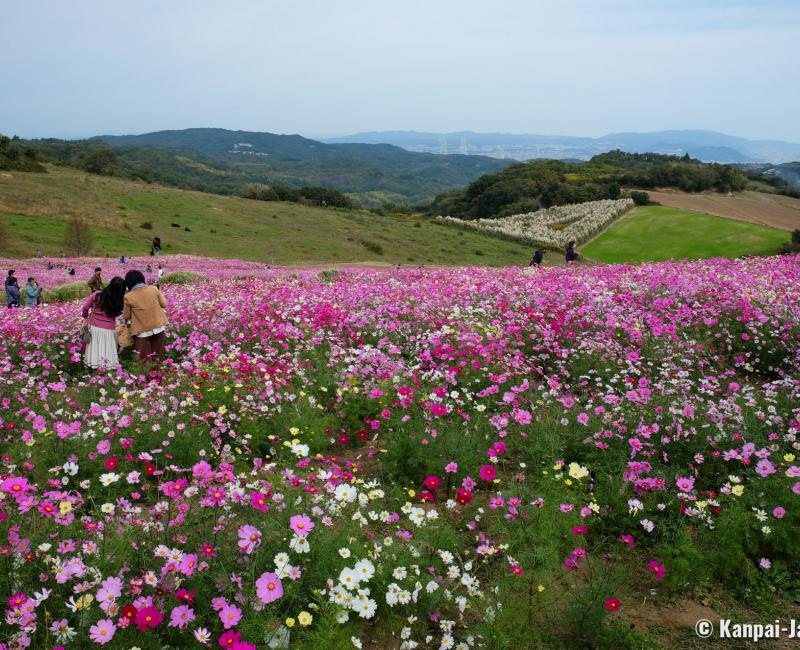
A convivial leisure destination
On the touristic side, Awaji-shima is attractive for its possibilities of outdoor activities. Many options are available to please the neighboring prefectures’ vacationists, be they with friends or family, such as:
- Several resort-type hotel complexes along the coastline,
- Several renowned theme parks 🎡, such as Naruto x Boruto and Hello Kitty,
- Botanical gardens and wide floral parks opened to countryside walks,
- Beautiful beaches 🏖, such as Goshikihama and its colored pebbles, and Ohama in Sumoto with its white sand and green pine trees, and,
- Onsen ♨️ villages for bath amateurs, essentially in the southern part of the island.
Awaji-shima benefits from a rather warm and sunny weather, and touristic attendance is naturally higher in spring 🌸 and mainly in summer when swimming in the sea is possible.
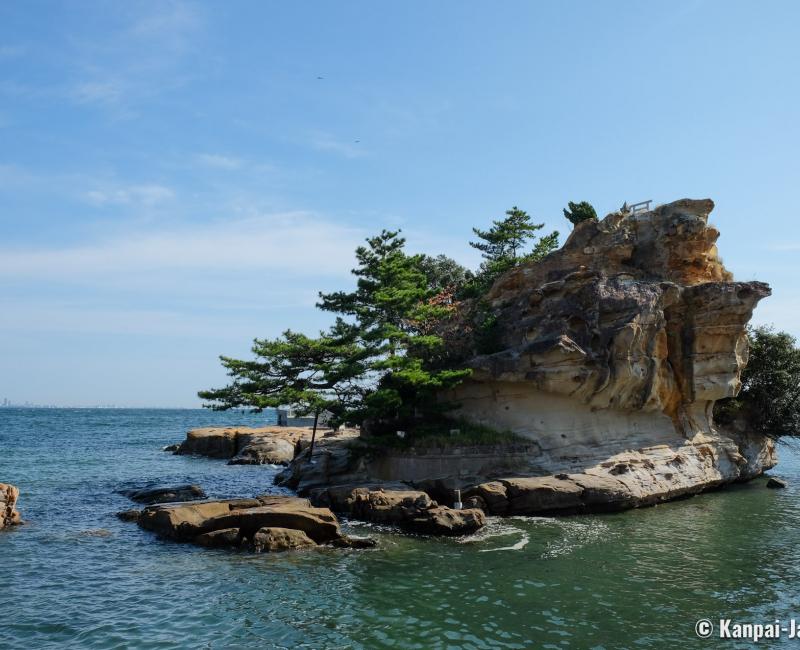
At the confines of Japan's creation myths
With a deep-rooted mythological heritage, Awaji Island is known as one of the first pieces of land of the Japanese civilization. This ageless history is represented in the temples and shrines throughout the island, mainly dedicated to Izanagi-no-mikoto and Izanami-no-mikoto, the couple of kami deities who created Japan, for example:
- Eshima (絵島): this sacred islet is crowned by a tiny and cute torii ⛩️ and is said to be the first Japanese piece of land that emerged from the sea. Nearby, was built the small shrine Iwakusu,
- Izanagi-jingu (伊弉諾神宮): one of the oldest Japanese Shinto shrines,
- Senko-ji (千光寺): a temple built at the top of Mount Senzan (448m), the peak of the island and considered the first mountain created in Japan,
- Onokorojima-jinja (おのころ島神社): a shrine with a huge vermilion torii.
Awaji is also the cradle of ningyo joruri, the traditional puppet theater, created about 500 years ago, and that evolved to become nowadays’ bunraku. Several one hour long shows are performed at Awaji Puppet Theater, the Awaji Ningyo-za (淡路人形座) at the southernmost end of the island.
At the start of the 1980s, one of the tallest Kannon statues in the world, of about 100-meter tall, was built by a local businessman Toyokichi Okunai. He passed away without heir and his wife was left with the difficult charge of managing this huge monument. The Awaji Kannon Statue was left derelict due to financial hardships that resulted in a lack of maintenance in the 2010s. The ownership was eventually transferred to the Japanese state that decided upon its dismantlement in 2022.
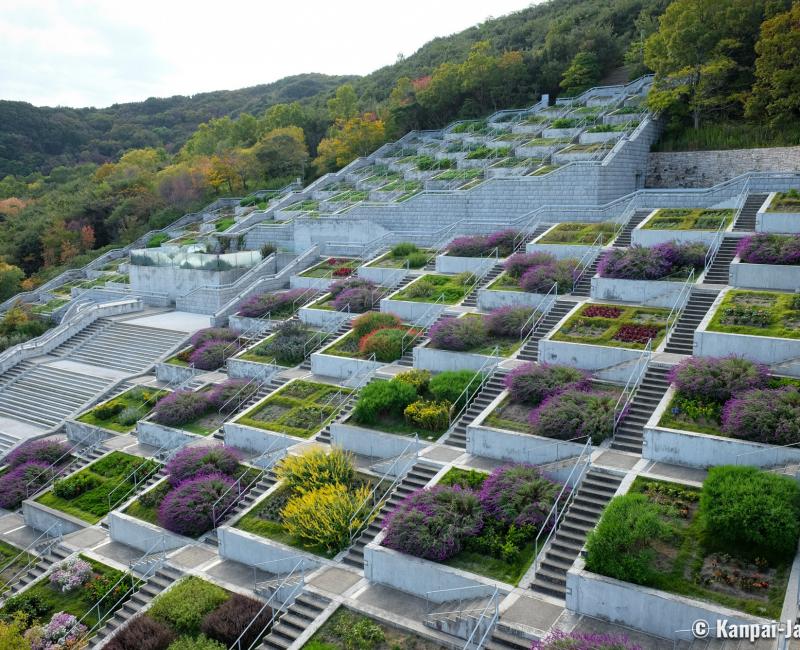
A focus on Ando Tadao’s architecture
Contemporary art is a specific feature of the Seto Inland Sea’s islands, and is also present in Awaji-shima through the works of architect Ando Tadao, who designed two major constructions in the north of the island:
- Awaji Yumebutai (淡路夢舞台): a memorial dedicated to the victims of 1995 Great Hanshin earthquake (whose epicenter was the island), and a conference center with sophisticated outdoor spaces, such as the photogenic terrace garden Hyakudan-en ("100-step garden"),
- Honpuku-ji Mizu-mido (本福寺 水御堂), a very graphic temple on the water, of a circular shape, completely built in concrete.
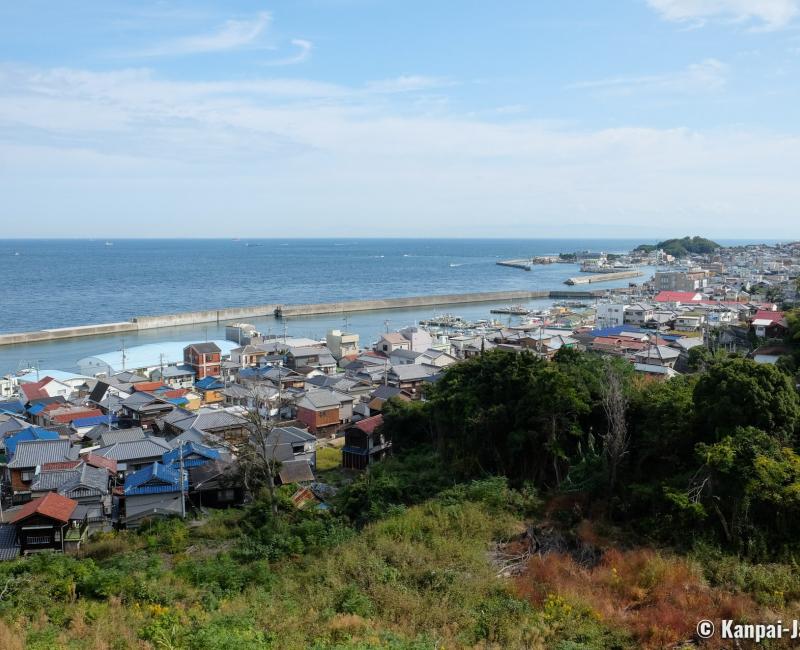
Pride in a local and sustainable economy
Nature is primordial on the island, whose inhabitants are committed to ecology and preservation of the environment. The main activities in Awaji are trying to engage in organic and local:
- Agriculture, with the farming of Awaji beef, whose meat can be enjoyed in burger, and onion cultivation,
- Incense production, that makes for 70 % of the national production,
- Fishing, thanks to its waters harboring fish such as red sea-bream, anchovy, and moray eel, and,
- Floriculture, especially the cultivation of narcissus.
Awaji’s inhabitants are used to consumption of seasonal products through short marketing circuits, a trend that is also visible in most of restaurants and cafes on the island.
Several days are necessary to completely visit the island. We recommend to organize the sightseeing by city or, for a quicker tour, to chose the exploration of the northernmost and southernmost ends of Awaji-shima.

